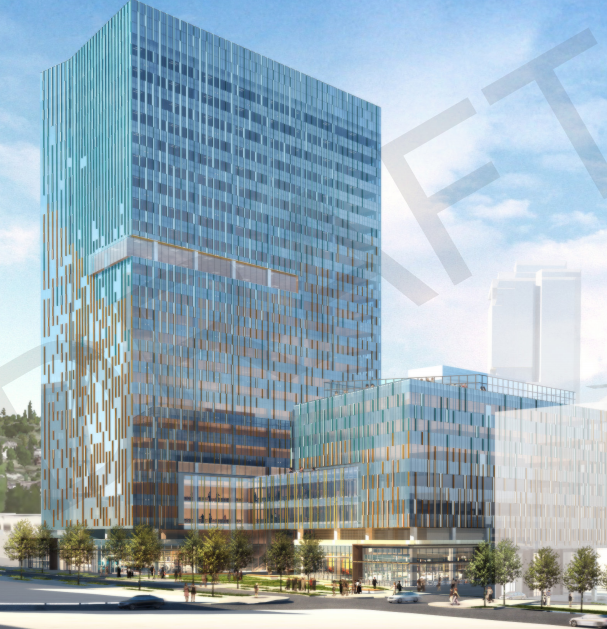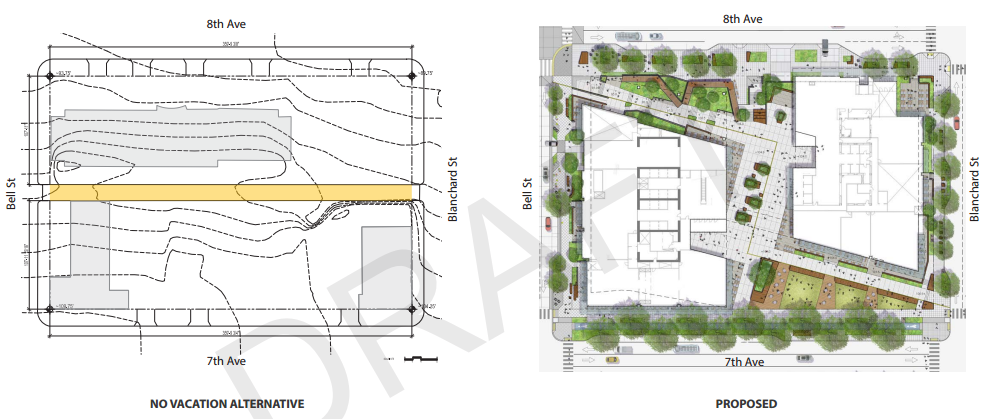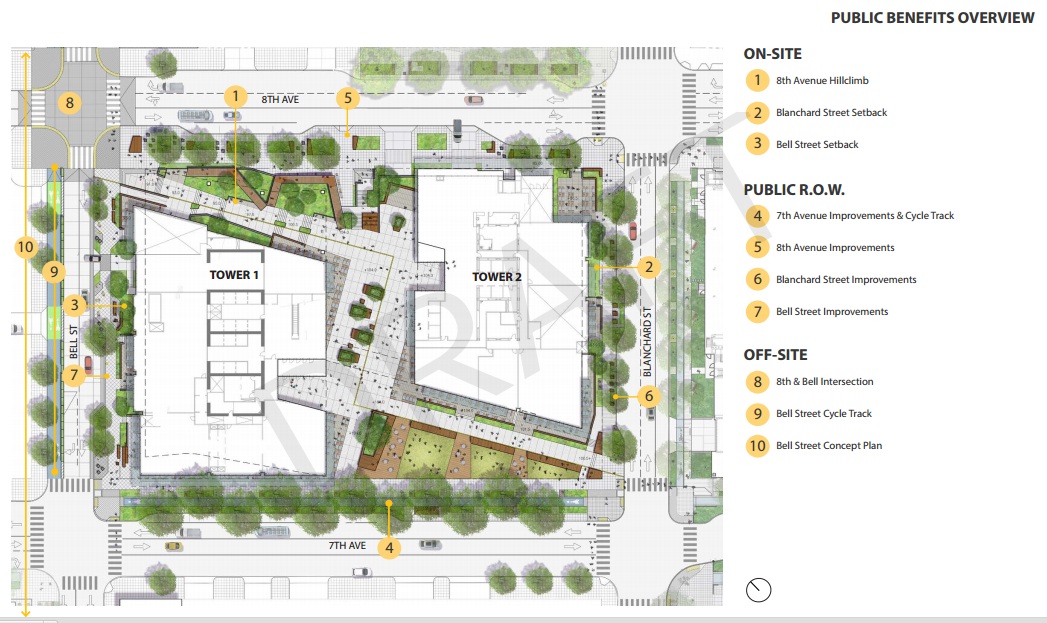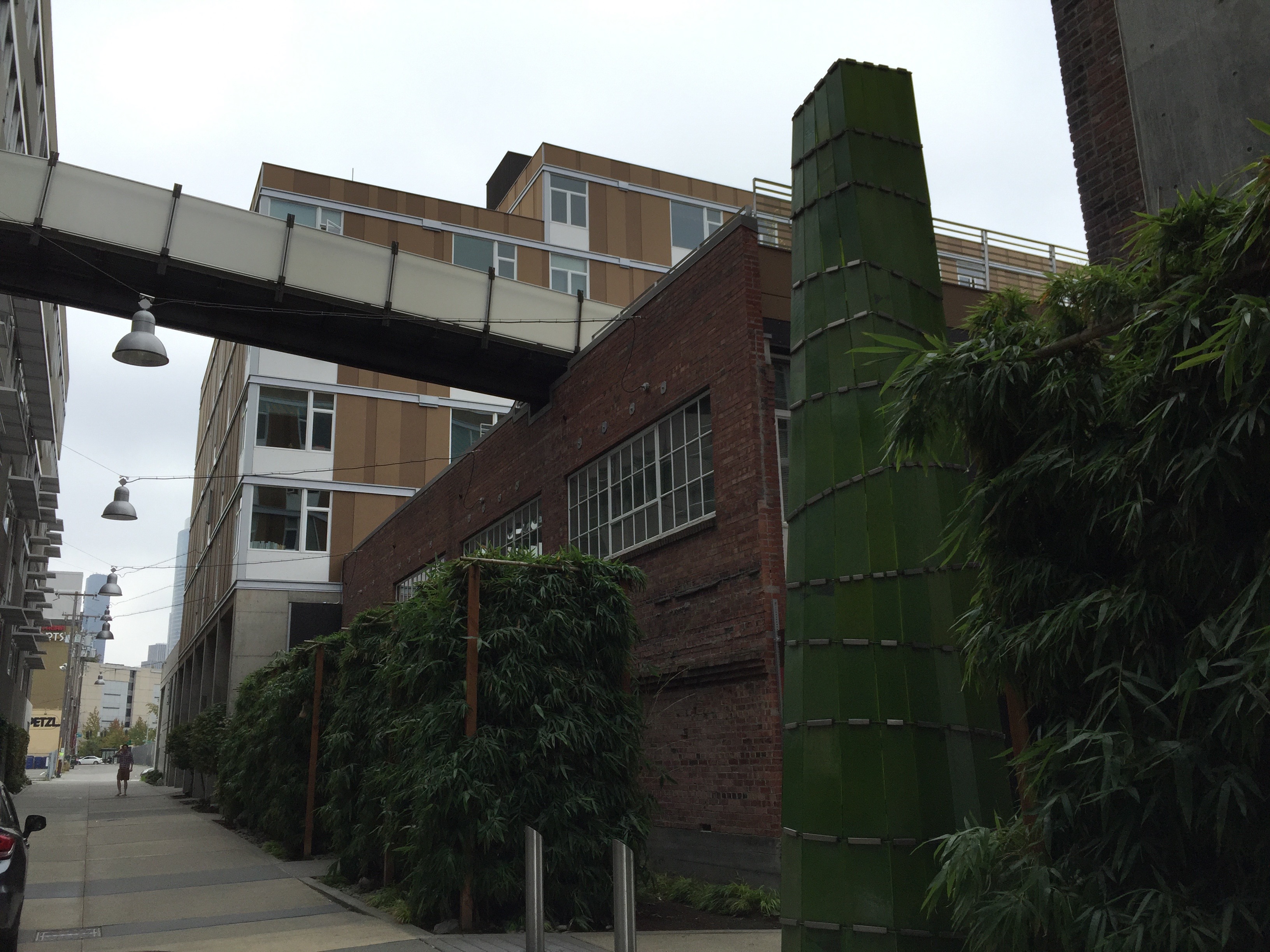

Last Monday, one of the first items that our brand new City Council voted on was a holdover matter from the previous council. This was a proposal to cede City right-of-way, otherwise known as a street vacation, on an alley in the Denny Triangle. The specific alley sits between Blanchard and Bell Streets and between 7th and 8th Avenues. Former home of the Hurricane Cafe, this block is the latest to figure into Amazon’s plans as they expand the portion of their campus that lies south of Denny Way. This would be the fourth alley vacation granted to Amazon in this area, apart from the vacations granted to build the portion of their campus developed by Vulcan in South Lake Union.

In December, the City Council found itself in a procedural deadlock; not enough councilmembers were prepared to say “yes” on the proposal itself, and not enough councilmembers to vote for a return of the proposal back to committee. Councilmembers Nick Licata, Mike O’Brien, Kshama Sawant, and Lorena Gonzáles composed the flank that was not ready to give the proposal a green light. Their primary concerns about the legislation had to do with any limitations on free speech rights that might be put on users of the would-be privately-owned public plaza in the space.
In the end, the Council voted to send it forward to the January 11th full council meeting, by which time language had been crafted for an amendment clarifying those free speech rights on the property. With that amendment, the measure breezed through in an 8-1 vote with only Kshama Sawant voting “no.”
At the City Council hearing, quite a bit of discussion on this proposal was devoted to the question of whether the labor practices of Amazon are adequate enough to allow the City to grant them what they are asking for. But those issues seem to detract from the improvement of the urban space, which is the most important part of this process.
Let’s look at the alley vacation itself. In exchange for ceding right-of-way to private ownership, the developer is required to provide public benefits that are deemed equal to the value of that space. In these cases, the public benefits have been, for the most part, improvements to the area immediately around the development site. Here, on Block 21 as it is called, the list of improvements includes the following:
- A hillclimb on the 8th Avenue side of the site;
- Setbacks of 10 feet on the Blanchard Street and Bell Street frontages of the site, designated Green Streets;
- Curb bulbs added to intersections on all sides of the site;
- A cycletrack on the east side of 7th Avenue between Blanchard Street and Bell Street;
- A bidirectional cycletrack on the Bell Street between 7th Avenue and 8th Avenue;
- A raised intersection at 8th Avenue & Bell Street; and
- A plan to continue the Bell Street design concept, currently in place between 1st Avenue and 5th Avenue, all the way to Denny Way.

These proposed improvements have the potential to vastly improve the pedestrian and bike user experience on this block, and to encourage users to walk, bike, or take transit to the site rather than drive. But clearly the most attractive improvement on a block-sized development here is the diagonal cut-through for pedestrians, allowing someone on foot to cut from the corner of 7th Avenue & Blanchard to 8th Avenue & Bell Street. If this plaza area is inviting and relatively unobstructed, it could greatly upgrade the existing alley’s capabilities for through travel.
The other major component of this is that it keeps curb cuts, and therefore vehicles entering and exiting the proposed buildings, off of Bell Street and Blanchard Street, which are designated as Green Streets. This should keep those streets much more desirable for users on foot and on bikes and reduce the potential for collisions. The work that has been done on this project to reduce the size of those curb cuts should serve as a model for other projects in the area. From early concept designs, curb cuts were greatly reduced in size, a measure that might seem counter-intuitive but should decrease the speeds of vehicles entering and exiting the site.

But the question of whether alley vacations are being pursued too much during the current development boom may still linger on some people’s minds. These are public rights-of-way that will likely never be returned to the public realm. When privately-owned public spaces like the plaza in question here are created, it is unclear how their use will be sustained over decades. Public amenities like cycletracks are already built into the transportation master plans and funding for them surely would come from our newly passed transportation levy. An alternative would be encouraging architects to take full advantage of our alleyways, as was done in the Alley 24 development in the Cascade neighborhood a decade ago. There, a complex of mixed-use structures were designed around the alley’s right of way.
That being said, alley vacations are a rare opportunity for the City (and by extension the public) to play a role in making great urban spaces. The Seattle Design Commission, which generally focuses on strictly City-owned properties, is the city’s voice in developing these spaces, much to the benefit of the residents of the neighborhoods where these projects are located. They are not normal development projects. The public benefits that are provided in these cases deserve our full attention and we should not allow ourselves to let ancillary issues take over.
Ryan Packer has been writing for The Urbanist since 2015, and currently reports full-time as Contributing Editor. Their beats are transportation, land use, public space, traffic safety, and obscure community meetings. Packer has also reported for other regional outlets including BikePortland, Seattle Met, and PubliCola. They live in the Capitol Hill neighborhood of Seattle.

